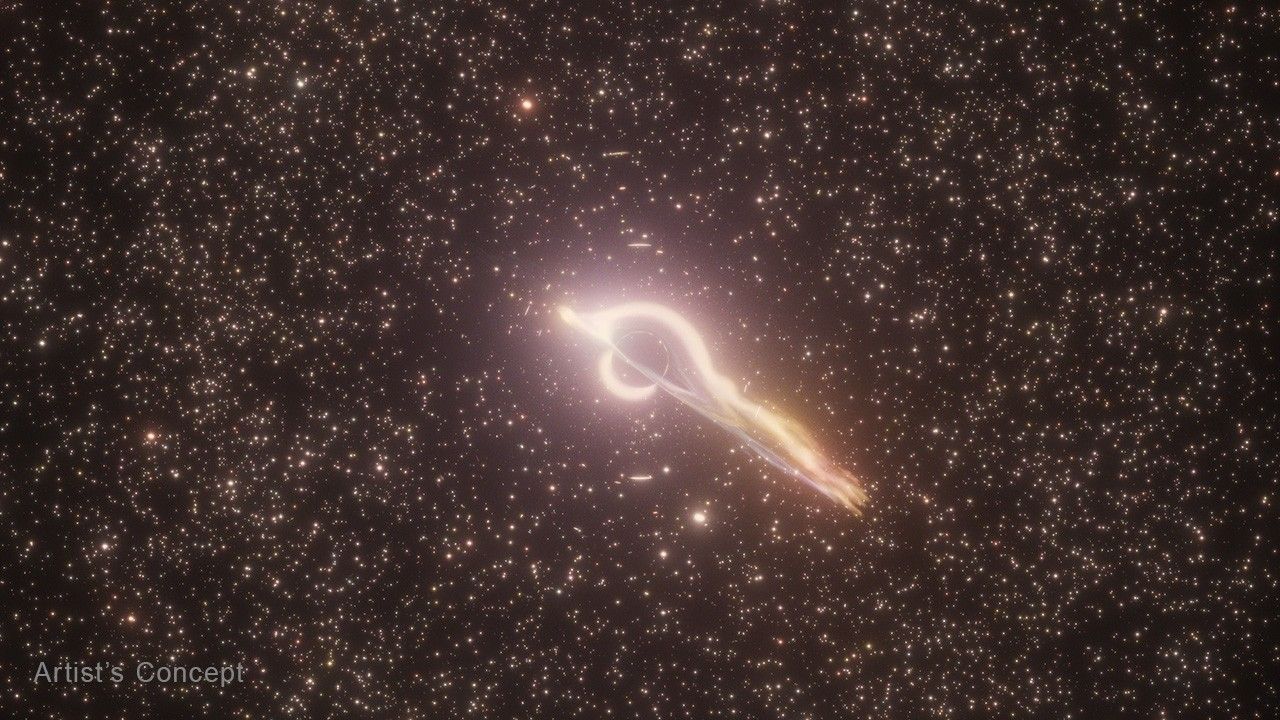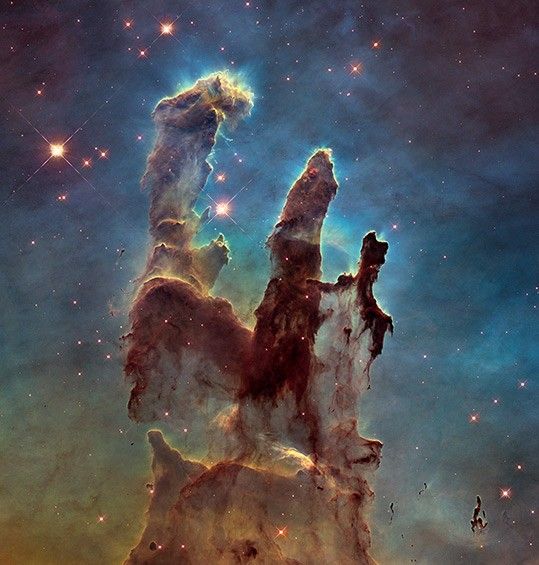1 min read
NGC 6099 Compass Image

This compass image of Hubble and Chandra data shows two elliptical galaxies, NGC 6098 at upper right and NGC 6099 at lower left. The fuzzy purple blob at bottom center depicts X-ray emission from a compact star cluster. The X-rays are produced by an intermediate-mass black hole tearing apart a star. Wavelength information at the top left corner shows the components of the image. A scale bar appears at the bottom left corner and compass directional arrows at bottom right orient the viewer.
About the Object
- R.A. PositionR.A. PositionRight ascension – analogous to longitude – is one component of an object's position.16:16:43
- Dec. PositionDec. PositionDeclination – analogous to latitude – is one component of an object's position.+19:23:28
- ConstellationConstellationOne of 88 recognized regions of the celestial sphere in which the object appears.Hercules
- DistanceDistanceThe physical distance from Earth to the astronomical object. Distances within our solar system are usually measured in Astronomical Units (AU). Distances between stars are usually measured in light-years. Interstellar distances can also be measured in parsecs.453 million light-years
- DimensionsDimensionsThe physical size of the object or the apparent angle it subtends on the sky.Image is about 1.5 arcmin across (about 200,000 light-years)
About the Data
- Data DescriptionData DescriptionProposal: A description of the observations, their scientific justification, and the links to the data available in the science archive.
Science Team: The astronomers who planned the observations and analyzed the data. "PI" refers to the Principal Investigator.The Hubble observations include those from program 17177 (I. Chilingarian)
- InstrumentInstrumentThe science instrument used to produce the data.WFC3/UVIS
- Exposure DatesExposure DatesThe date(s) that the telescope made its observations and the total exposure time.5 September 2023
- FiltersFiltersThe camera filters that were used in the science observations.F475W, F814W
- Object NameObject NameA name or catalog number that astronomers use to identify an astronomical object.NGC 6099
- Object DescriptionObject DescriptionThe type of astronomical object.Hyperluminous X-ray Source near Elliptical Galaxy
- Release DateJuly 24, 2025
- Science ReleaseNASA’s Hubble, Chandra Spot Rare Type of Black Hole Eating a Star
- CreditScience: NASA, ESA, CXC, Yi-Chi Chang (National Tsing Hua University); Image Processing: Joseph DePasquale (STScI)

These images were acquired by the WFC3 Instrument on the Hubble Space Telescope. The color results from assigning different hues (colors) to a monochromatic (grayscale) image. In this case, the assigned colors are: Cyan: F475W, Orange: F814W
Related Images & Videos
Share
Details
Claire Andreoli
NASA’s Goddard Space Flight Center
Greenbelt, Maryland
claire.andreoli@nasa.gov


































